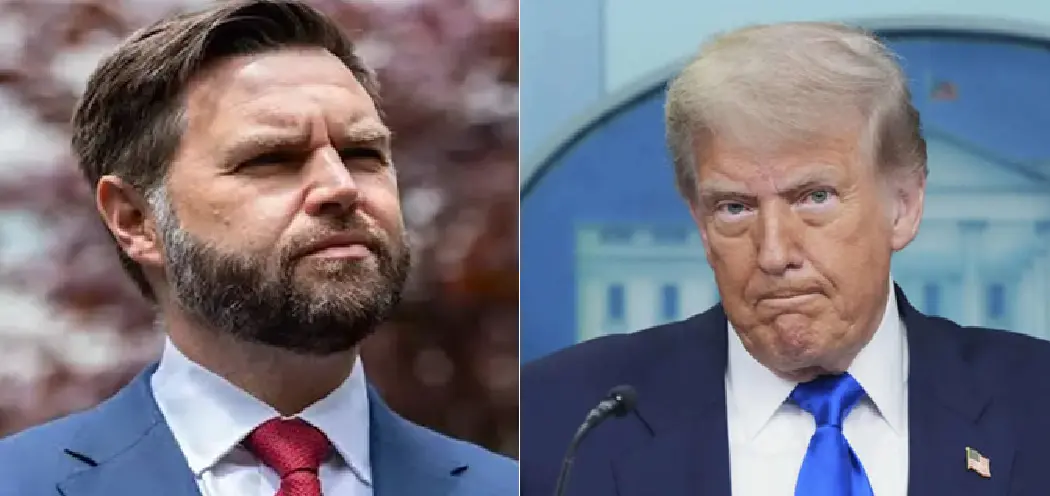
U.S. imposes secondary tariffs on India to curb Russian oil trade and end the Ukraine war
The global stage is heating up, not just with war, but with words, trade, and diplomacy. In a recent interview, U.S. Vice President JD Vance revealed a bold strategy: using secondary tariffs on India to push Russia toward ending its war in Ukraine. But what does this mean for India, the U.S., and the world? Let’s break it down in simple terms.
What Are Secondary Tariffs and Why Target India?
Secondary tariffs are extra taxes placed on goods from one country not because of what that country did directly, but because of its relationship with another. In this case, the U.S. is targeting India for buying discounted oil from Russia.
According to JD Vance, these tariffs are part of President Donald Trump’s plan to apply “aggressive economic leverage” on Russia. The idea is simple: make it harder for Russia to earn money from oil, which helps fund its war in Ukraine. Since India has become one of the top buyers of Russian crude oil, the U.S. sees this as a way to cut off Russia’s cash flow.
But here’s the twist China is actually the largest importer of Russian oil, yet the U.S. hasn’t imposed similar tariffs on Beijing. This has raised eyebrows and sparked debate about fairness and consistency in U.S. foreign policy.
India’s Response: “We Buy What’s Best for Us”
India isn’t taking the criticism quietly. Officials have strongly defended their oil purchases, saying they are based on national interest and market needs. External Affairs Minister S. Jaishankar recently responded with sharp words: “If you have a problem buying oil or refined products from India, don’t buy it. Nobody forces you to buy it”.
India argues that its energy decisions are practical. After Western countries stopped buying Russian oil due to sanctions, Russia began offering it at discounted prices. For India, a country with growing energy needs, this was a smart economic move.
Indian leaders also point out that Europe and the U.S. still buy refined oil products from India, even if some of that oil originally came from Russia. So, they say, it’s unfair to criticize India while still doing business with it.
The Bigger Picture: U.S. Strategy to End the War
JD Vance believes that these tariffs are part of a larger plan to bring Russia to the negotiating table. He said the goal is to make Russia feel isolated and financially strained, so it will stop bombing Ukraine and agree to peace talks.
Vance also mentioned that the U.S. is trying to show Russia a way back into the global economy if it stops the violence. “They are going to continue to be isolated if they don’t stop the killing,” he said.
This strategy is not just about punishing Russia. It’s also about sending a message to countries that support or trade with Russia. By targeting India, the U.S. hopes to create pressure from all sides.
However, critics argue that this approach could damage U.S.-India relations, which have been growing stronger in recent years. Some fear that punishing India could push it closer to Russia or China, which would be a setback for U.S. diplomacy.
What’s Next? Trade Talks, Tariff Battles & Global Impact
The situation is still unfolding. Talks between India and the U.S. have hit roadblocks, with a recent round of negotiations in New Delhi abruptly canceled. Meanwhile, the tariffs some as high as 50% are already affecting trade between the two countries.
JD Vance hinted that more tariffs could be added or removed depending on how Russia responds. “Maybe we will apply additional pressure, or maybe we feel like we are making progress, and we will dial that pressure back,” he said.
For now, India is standing firm. It continues to buy Russian oil and insists that its decisions are fair and necessary. The U.S., on the other hand, is betting that economic pressure will lead to peace.
Whether this gamble pays off remains to be seen. But one thing is clear: in today’s world, wars aren’t just fought with weapons they’re fought with trade, diplomacy, and tough choices.
Also read – “Get It Right”: Trump Adviser Rossow Urges Stronger U.S.-India Ties Amid Tariff Tensions
Stay updated with latest updated news blogs on Rapido Updates.
2 thoughts on “Secondary Tariffs, Tensions & Talks: A Risky Gamble to Crush Russia’s War Machine”
Comments are closed.